Though there are quite a few flagship devices that offer impressive specs, the LG G3 also offers some interesting camera innovations. Infrared laser autofocus and a 13-megapixel sensor makes for a snappy shot, and that's about the most you ask for of a cellphone camera.
While no smartphone is perfect, this is the one that'll last you until your next contract cycle. Next-gen hardware is just around the corner, but the G3 is well-equipped to take whatever you dish out better than any current phone on the market.
Design & Usability
Looks like a Cadillac, runs like a stock car
If you could sum up the entire design schema of the G3 in one word, it'd be efficiency. A sleek metal-looking plastic covers the entire body of the phone, with very little interruption of the exterior. Not only is this sort of minimalism the most striking feature of the hardware, but it also permeates the aesthetics of LG's flavor of Android as well. Holding the phone in your hand, you'll see no buttons, no case overlap, no eyesores. All you'll really see are a front-facing camera, tiny bezel, and an earpiece.
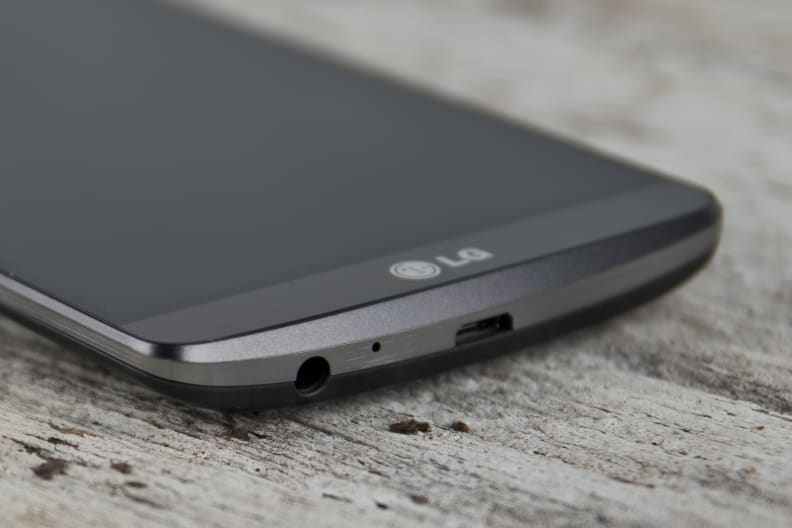
A bottom-mounted headphone jack may seem like a stupid thing to gush about, but it's one of the best durability features you can have on an otherwise non-rugged phone.
Flipping the phone over, you'll see what was moved from other parts of the phone to be hidden from your view. A laser rangefinder, 13-megapixel f/2.4 rear camera, volume rocker, and power buttons grace the top of the phone's back. Reactions to these physical controls are mixed, and it seems like most people either love them or hate them. At the top of the body, they can be tough for smaller hands to hit, and easy to fat-finger even if you have average-sized hands.
The G3 has all the makings of a flagship phone, but we've long passed the point where that's enough to make the case to buy. On paper, this is a phone that should stand atop the mountain of smartphone contenders, but there's other considerations that can make or break your buying decision. Though it's certainly an impressive piece of phone, it's still a big one. The 5.5-inch 1440 x 2560 screen may be awesome for video content, but it's quite a lot of screen to pack into a palm or pocket. It's mercifully light at 5.26 ounces and only 0.35 inches thick, but this svelteness doesn't exactly make it easier to hold.
{{ photo_gallery "tour" }}
Buried beneath the brushed-metal-like plastic back are the microSD and microSIM slots. There, you'll also find a 3,000mAh removable battery, speaker, and not much else. There's been a trend for Android phones to move away from offering these options as they make for a more expensive, user-tamperable phone, but it's always a nice luxury to have expandable storage—and for that we applaud LG. Sometimes that 32 gigabytes fills up fast, and if you've ever wanted to load up a bunch of media for a flight, you know exactly what I'm talking about.
As far as smartphones go, the G3 really doesn't do as much as the Samsung Galaxy S5 to set itself apart with features, but rather, it lets the hardware do the talking for it. A hyper-powered Qualcomm Snapdragon 801 processor and 3 gigs of RAM make for a powerhouse of a phone, and a 5.5-inch 1440p LCD screen gives you a serious display. It's not as great as an AMOLED screen, but you'd be hard-pressed to find a better LCD on the market today.
{{ photo_gallery "design" }}
You’ll be well taken care of for the foreseeable future when it comes to connectivity. The G3 comes standard with an 802.11ac WiFi card, Bluetooth 4, NFC, and DLNA support. Though you’ll probably never use the feature, the microUSB 2.0 port doubles as a SlimPort—allowing you to export video to compatible displays.
Interface
LG's flavor of Android 4.4 doesn't leave a bad taste in your mouth
Running Android 4.4.2, the G3 has an operating system that's matured to the point where users can bask in apps and media aplenty, so whatever advantages iOS offer in this department are often overstated. Really, you shouldn't worry too much about having to do without if you grab the G3—the Play Store is chock full of media, and you can always augment it with Amazon's competing market as well.
{{ photo_gallery "screens" }}
After turning the G3 on, you'll instantly be greeted by a strange-looking lockscreen. Unlike bone-stock Android devices, not only can you just swipe anywhere to unlock, but you can also hold your finger on any of the five icons and swipe up to unlock directly to an app. It's a cool feature, and one worth keeping around—but you can also change it up if you feel like it. If hitting the sleep/wake button is a pain for you, the phone's default settings allow for you to double-tap the screen to wake it.
I will say that this is a bit of a half-baked solution to a problem entirely of LG's making. Though the rear-mounted sleep/wake button is attractive-looking, in practice it's tough for most users to really take advantage of. By making the capacitive screen able to unlock your phone, you can find yourself in the odd position of the G3 unlocking itself and opening some of the default apps on its own. This happened to me more than once, and if you disable this unlock setting, you are forced to use the poorly-placed physical button.
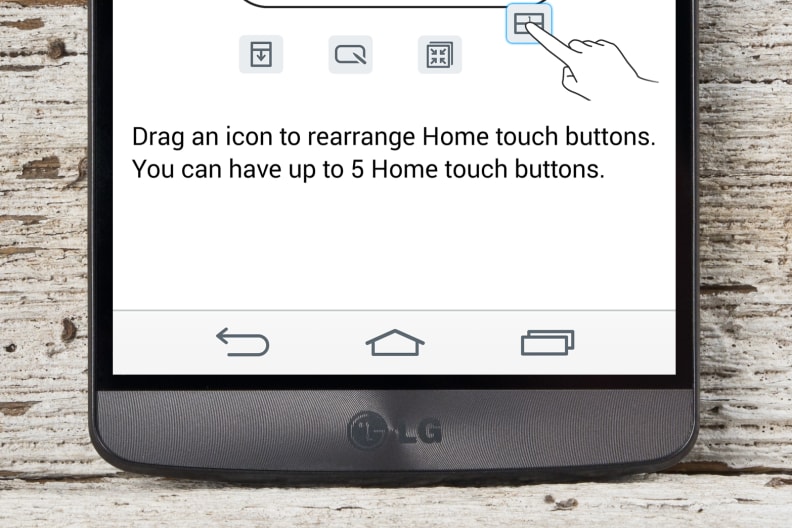
The ability to add home menu options is a big plus.
Additionally, there's now no way to disable this without some trickery. In the last update to LG's software, they removed the "Disable KnockOn" option, preventing you from turning this feature off. If the detector to tell the phone it's in a pocket worked, that'd be one thing, but it doesn't always. It's certainly a frustration, and one worthy of pause.
Once at your homescreen, you'll notice that LG has crammed in a couple widgets, but they're pretty vanilla all things considered. If you're buying a carrier-locked version, you'll also notice a lot of cruft apps that can't be uninstalled. This has been a scourge of battery life for many phones, but c'est la vie. It's tough to get a good subsidy without needing to put up with this, but it's still a hassle to deal with the endless torrent of carrier crapware when all you want is a smartphone.
All that aside, LG's skin of Android actually isn't all that bogged-down in questionable features. Not only does it allow for pop-over notifications (if you want), but it also has a skin that is much more visually striking than the default KitKat theme. Fans of the minimal UI style interface will love LG's aesthetic. The notification shade at the top is home to a quick settings toggle for most of the basic functions of the phone, and the Korean electronics giant hasn't messed too much with a good thing.
Because this isn't so much a forked version of Android—more of a tweaked one—you'll find that virtually all your apps and media will work on this phone. There aren't any redundant app stores, and most of the tweaks you'll find are actually quite helpful. I liked the ability to set your own home touch icons, and dual-screen apps are quite the neat ability. The beauty of having a Google-approved device is that you can pretty much change anything you want about the phone, and everything you need to get started is right in the play store. Enthusiasts might elect to grab something like Nova or Apex, but there's no wrong answer here.
Performance
Not only does the processor make the grade, but that QHD screen ain't too bad either.
Judged purely as a smartphone and nothing else, the G3 is one of those phones that will earn a special place in your heart. Sure, it's not the most ostentatious piece of hardware, but it has the muscle to do pretty much anything you'd want. In our lab tests, the G3 stands head-and-shoulders above some of its most bitter rivals.
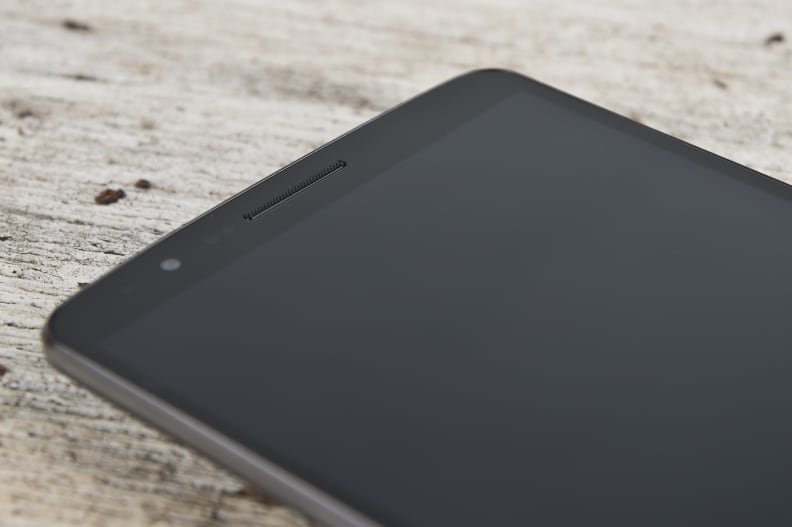
An anti-glare coating dispels glare so well that only 1.1% of light reflects in any direction.
If you’re looking for battery life, the LG G3 is your phone. That enormous battery may suffer a bit at the hands of the display, but it does power your phone through the day. In our video battery test, we were even able to get it playing one of the worst movies of all time for 7 hours and 20 minutes nonstop—which is head and shoulders above most of the phones we tested. Just be aware that this thing doesn’t charge quickly, so be sure to top off when you can.
Starting with that 1440p screen, the lab results for the G3 were impressive across the board. HDTV-like color reproduction, fair contrast performance, and low reflectivity are all great things to have in a screen. The low reflectivity is especially important for a smartphone—you're going to be using this thing outdoors, so the fact that it only reflects 5.9% of all light shone on the screen (1.1% direct) means you won't have to worry too much about bright light. It's no OLED screen, but it's an impressive LCD.
As far as processing power goes, the G3 is able to chew through processing tasks and 3D graphics with little issue. There's currently no benchmark available that makes the G3 break a sweat—it even tops web browser, CPU, GPU tests. Most notably, we were able to consistently get 60 frames per second in a 3D simulation benchmark, and that's outstanding for a mobile phone with such a high resolution. When it comes to gaming and multitasking: the G3 is a powerhouse—despite all those extra pixels it has to push.
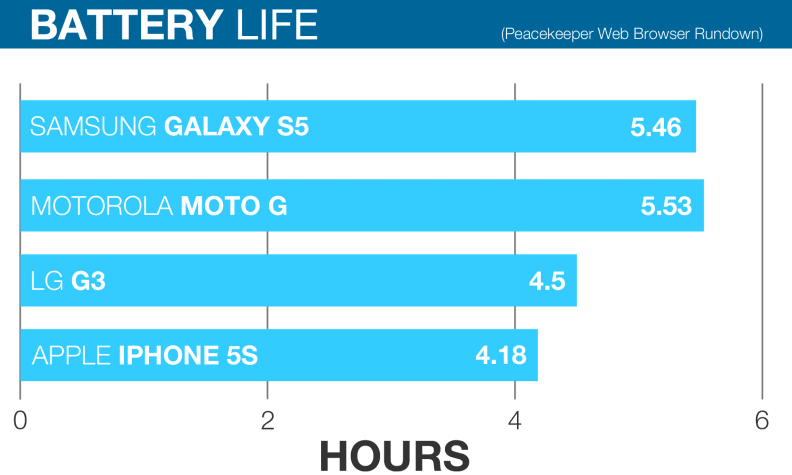
That QHD display is a tough burden to bear for the G3's battery when surfing resource-intensive web pages.
We will note that for whatever reason, the stock browser on the G3 was unable to really spread its wings in basic tests. It doesn't want to scroll smoothly, or even render complex objects as fast as it could. It's a bit perplexing given all its other results, but the average user is unlikely to notice a huge lag or anything. Usually we see tablets and computers have a sore spot or two, and the G3 is no exception.
Camera
Cream of the crap
Let's face it: Smartphone cameras aren't going to challenge DSLRs—much less good point and shoots—in terms of image quality. However, it's really tough to argue against having a "good enough" camera attached to a device you already carry around with you. With that philosophy, smartphones are assimilating just about every device they come across. Remember when your teachers told you to memorize things because you couldn't carry around a dictionary, graphing calculator, or computer around with you? Looks like you got the last laugh.

Get used to lens flare in your shots if you don't manage your lighting.
However, a lack of relative quality in smartphone cameras don't mean that they're bad, per se, but there's definitely hardware out there that will disappoint. That's not the case with the G3, though it's still prudent to manage your expectations. It may not have selective refocus, but it's got a few aces up its sleeve.
Many have heralded the camera and its laser-autofocus as a major breakthrough, and it's not hard to see why. This is easily one of the best cameras on an Android phone out there. Though it's not going to hold a candle to a similarly-priced point and shoot, the idea that the G3’s 13-megapixel sensor can shoot 4K video at 30 frames per second is astounding. Even more that it uses an infrared laser to shave off precious fractions of a second when focusing. Considering just how awful the rest of the smartphone pack is in this regard, this advance is no small miracle.
Test results were fairly bad when you compare it to average point and shoots today—but in practicality you really probably won’t see enormous differences. Sharpness is decent, if only due to the phone using its software to oversharpen high-contrast edges. Colors are very inaccurate, but saturated to the point where they approximate something resembling what they should be. Noise hovers around 1% in decent light, which only bumps up a bit in low light.
You’ll notice that this camera has a very slow shutter speed, and overall fairly mediocre dynamic range. Shots of fast-moving subjects are blurred heavily, and that in situations where there's a large range of lighting—highlights get blown out, while areas of low-light show up as nothing more than black splotches. Nothing unexpected, but for perfectionists, you may want to consider getting a camera instead.
{{ photo_gallery "sample-photo" }}
Conclusion
The G3 hits a lot of highs with no lows
Maybe it's best to sum up this way: For a 2014 phone, the LG G3 has everything you want, and very little you don't. It posts results at the top of the pile, but even its biggest flaws aren't enough to make anyone disappointed they bought the G3.
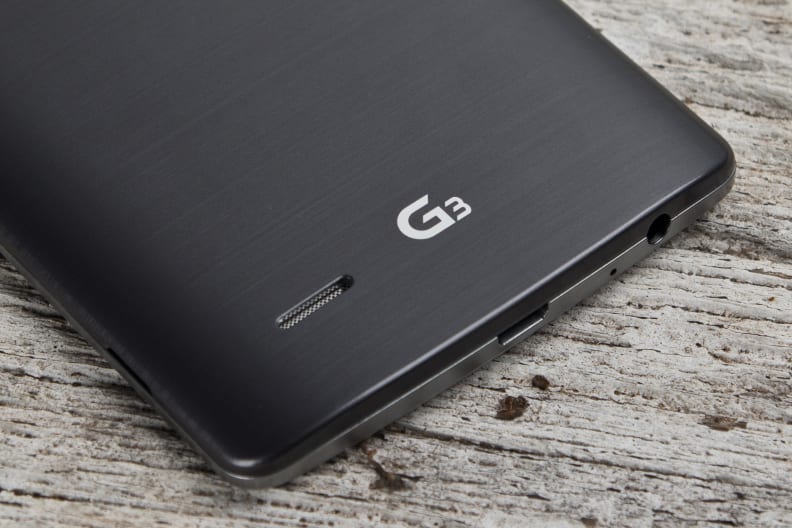
That may look like an all-metal housing, but it's really plastic—a grace for your pants pocket.
LG gave its G3 a top-notch processor, hyper-powered guts, and a decent screen—more than enough to satisfy enthusiasts and novices alike. However, the attention paid to making the G3 the cream of the crop doesn't stop at the internal specs, but extends to the camera in a way that's extremely uncommon for Android phones. 4K video? A laser autofocus? These are some seriously impressive features.
I will say that there are some head-scratchers when it comes to software design—namely the inability to turn off the damn fool KnockOn feature—but for the most part even purists will adapt to LG's flavor of Android 4.4 (KitKat). Of course, you can always replace the launcher like you would on any Android phone, but LG's tweaks are mostly great. Really, this is a polished device that is more than ready for primetime.
Though it's not as unique as LG's G-Flex experiment, the G3's no less worthy of your attention. It's a superbly-equipped phone, and the G3 will last you a year or two unlike many of the bottom-feeder contract phones. It remains unclear how long it'll be supported with the latest version of Android, but what is clear is just how far ahead of the pack the G3 stands right now.
If you don't feel like shelling out roughly $700 for an unlocked version, you might want to save yourself some money and grab a Moto G, Nexus 5, or wait for some of the new Android L phones due in November. If you're not willing to sacrifice on the camera, you're pretty much locked into buying an iPhone or Nokia Lumia at that point.
Meet the tester
A seasoned writer and professional photographer, Chris reviews cameras, headphones, smartphones, laptops, and lenses. Educated in Political Science and Linguistics, Chris can often be found building a robot army, snowboarding, or getting ink.
Checking our work.
Our team is here to help you buy the best stuff and love what you own. Our writers, editors, and experts obsess over the products we cover to make sure you're confident and satisfied. Have a different opinion about something we recommend? Email us and we'll compare notes.
Shoot us an email


